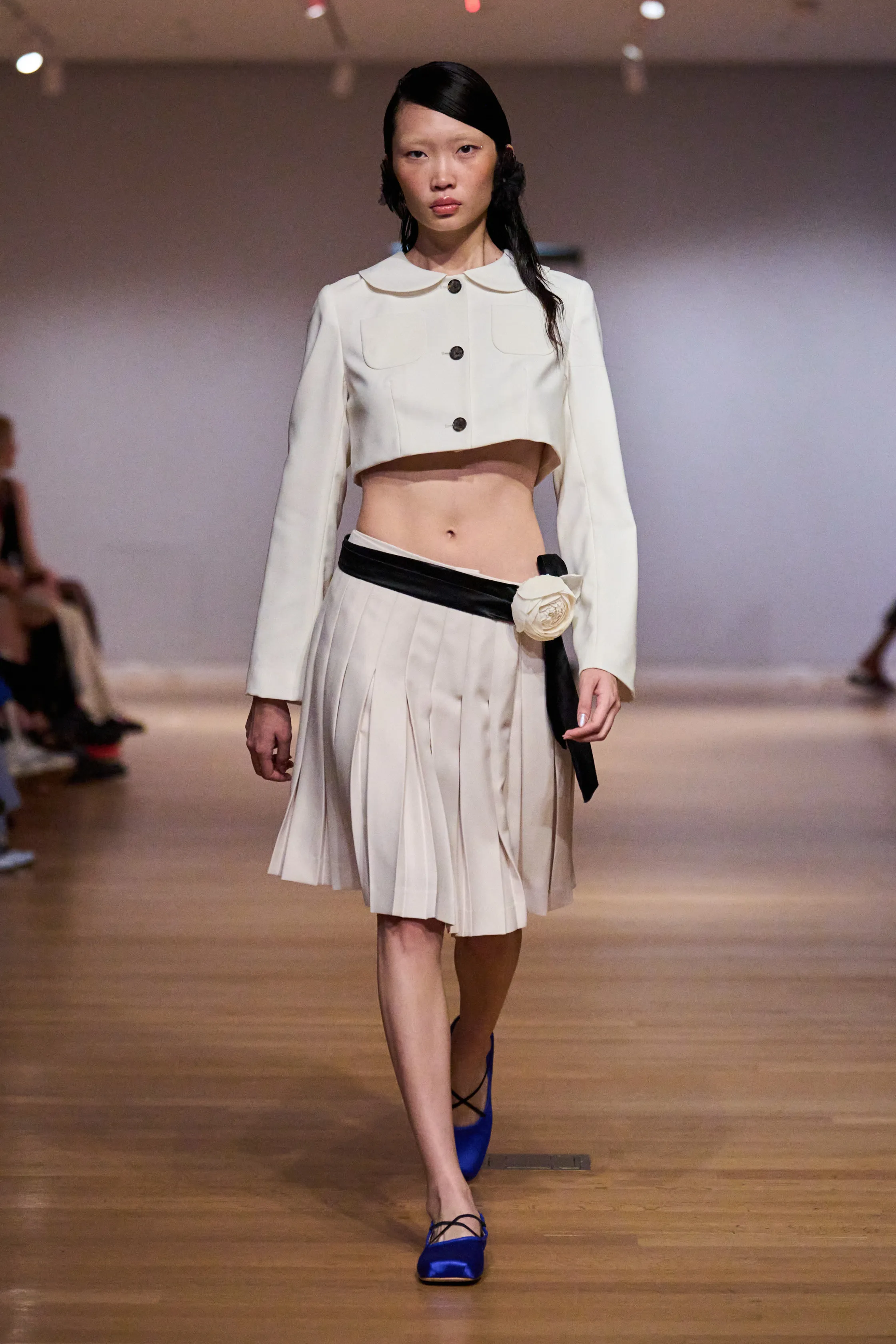This Summer's Drop-Waist Trend Is Deeper Than It Seems
- Kaitlyn Parker
- Aug 25, 2024
- 3 min read
Gone are the days of high-waisted, restrictive clothing, as the drop-waist silhouette brings a relaxed, elongated look that exudes effortless elegance while offering a more comfortable and fluid fit. But what convinced fashion fanatics to adopt this arguably less flattering style? Blame it on nostalgia and the charm of carefree cool, or perhaps something darker.
In short, what is a drop waist? The style emerged during the flapper era of the 1920s, gaining popularity post-World War I, and has seen multiple revivals since. Its absence has clearly been felt, thus in Spring/Summer 2024 fashion shows, it made a bold return on the runways of Sandy Liang and Schiaparelli among others. Dresses and skirts featured lowered waistlines starting at the hips, thereby accentuating the natural curves of entire torsos. This shift follows the resurgence of low-rise trousers, popularized in recent years by Gen-Z culture embracing Y2K fashion trends. This return of the drop waist isn’t happening in a vacuum—it’s closely tied to the resurgence of edgier aesthetics like “heroin chic” and “indie sleaze”, both of which celebrate a more undone, rebellious look.
The term heroin chic was coined following the tragic overdose of beloved photographer, Davide Sorrenti in 1997 and has since been used when referring to those possessing qualities associated with drug abuse such as pale skin, dark under-eye bags, and notably, waif-like figures. This era infiltrated the mainstream in the '90s as heroin became cheaper and purer, reducing its stigma and expanding its reach into middle-class and wealthy circles. Coupled with a backlash against the healthy, all-American supermodels of the ’80s like Cristie Brinkley and Brooke Shields, heroin chic gained traction, promoting an image that glamorized addiction and mental decline.
The term remains especially problematic today amidst the ongoing opioid crisis, as it continues to glorify substance abuse through images of beautiful models in disheveled states. In 1996, Robin Givhan wrote in the Los Angeles Times that this “nihilistic vision of beauty” parallels “the wasted silhouettes and pinched faces of drug addicts.” Photographs of Kate Moss, Jaime King, and Gia Carangi, commonly associated with heroin chic, have been replaced by a new wave of models sporting similar features. Despite the body positivity movement throughout the 2010s, skinny worship lives on through fans of Gabriette, Amelia Gray, and Bella Hadid. The widespread adoption of Ozempic by non-diabetics, the normalization of plastic surgery, and the rise of TikTok influencers like @livsschmidt and @kingkrabbypatty have acted as a portal, time-traveling us back to this harmful mindset of glamorized thinness and self-destruction. The attempted return of heroin chic seamlessly aligns with the comeback of drop waist clothing, both favoring androgynous, elongated silhouettes over curvier figures. It’s a stark reminder that women’s bodies continue to be treated as trends, with each era dictating which shape is “in.”
In the early 2000s, a subculture known as indie sleaze emerged out of Brooklyn’s indie rock scene. The movement originated with bands like The Strokes, Interpol, and Yeah Yeah Yeahs who channeled music from groups in the countercultural rock era while visually referencing trends from the ‘60s and ‘70s. Their influence resulted in the production of aesthetically hedonistic music and low-maintenance, messy fashion. As structured streetwear is on its way out and artists like The Dare are moving in, it's safe to say that indie sleaze is beginning a resurgence of the “unbothered” look. Often incorporating a runway favorite, drapery, drop waist embraces carefree, rebellious styles by rejecting conventional silhouettes. In this landscape of cyclical fashion trends, the drop waist’s revival feels inevitable. It’s more than just a nod to vintage glamour; it’s a symptom of a broader cultural shift toward edgier, more subversive aesthetics
As fashion once again celebrates an androgynous, elongated figure, we’re reminded how women’s bodies continue to be molded to fit the whims of each era’s ideal. This time, it’s a mix of nostalgia and rebellion driving the trend, reinforcing that what’s “in” often mirrors deeper societal attitudes toward identity, self-expression, and, unfortunately, the commodification of body types.











